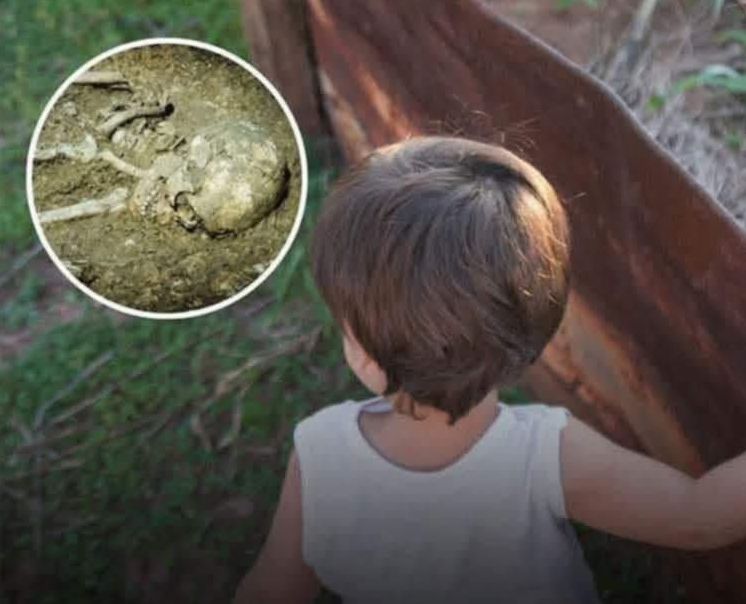Across the world, countless cultures have held a deep, enduring belief: that life does not begin at birth nor end at death. Among these, the Druze community in the Golan Heights is particularly renowned for its long-standing faith in reincarnation, the concept that the soul can return to the world, carrying fragments of previous experiences into a new life. For centuries, the Druze have observed subtle signs, traditions, and even physical markings that hint at the continuity of the soul. But few cases have captured the imagination of scholars, scientists, and locals alike as powerfully as that of a three-year-old boy whose story would seem almost impossible to believe.
From the moment he was born, the child drew attention in his village. He carried a distinct red birthmark on his head, a mark that the Druze interpret as a silent witness to the manner of death in a previous life. To outsiders, it might appear as a simple mark of skin, but within the Druze community, such a sign is laden with profound meaning. From his earliest days, he exhibited behaviors and knowledge that no child of his age could normally possess. He would speak with alarming confidence about events, people, and places he could never have experienced in this life.
By the age of three, the boy began recounting vivid memories of a previous existence, describing in detail how he had been murdered with an axe. His words were not vague or imaginary; they included precise locations, the names of people he claimed to have known, and, most strikingly, the spot where his body had been buried. He even indicated the location of the murder weapon itself. At first, villagers and family members were understandably skeptical. How could a toddler remember a life that had ended decades before his own birth? How could he know the details of a murder scene he had never visited?
The intrigue deepened when investigators, guided by the child’s exact directions, uncovered a human skeleton and an old axe precisely where he had claimed they would be. The alignment of his statements with reality stunned everyone involved. What was previously dismissed as coincidence or childish imagination now took on an almost otherworldly significance. Witnessing the discovery firsthand was Dr. Eli Lasch, a respected physician in the region, whose detailed observations were later included in Trutz Hardo’s book Children Who Have Lived Before, a landmark collection documenting cases of children who recall previous lives.
Yet this is far from the only instance of such phenomena. Across continents and cultures, similar cases have emerged, each challenging our conventional understanding of life, memory, and identity. In the United States, young James Leininger began recalling memories of a life he could not possibly have known—his death as a pilot during World War II. His accounts included intricate details of the plane, the exact circumstances of the crash, and even the names of fellow crew members. Subsequent research confirmed these details with astonishing accuracy, further fueling debates about reincarnation and the possibility of the soul carrying memories beyond death.
In Thailand, another child, born with unique birthmarks, recounted a violent death in a previous life, which corresponded in remarkable detail to historical records. Scholars and witnesses note that these children often recall not only their own deaths but also contextual details about their former families, homes, and environments, as though their consciousness had truly traveled back through time. Each story, whether from the Middle East, Asia, or the West, raises the same haunting questions: Are these purely coincidences? Could there be psychological, neurological, or genetic explanations? Or are they windows into a reality far beyond what science currently understands—a continuity of consciousness that transcends the limits of physical life?
Skeptics insist that suggestion, observation, or subconscious learning could account for these occurrences. Yet the precision and consistency of the children’s recollections often defy such explanations. These children speak with an authority and certainty that suggest an experience beyond imagination. They describe events they could not have possibly witnessed, providing details so specific that they leave even seasoned investigators speechless.
The Druze boy’s case, in particular, is remarkable not just for the evidence it produced, but for how it reflects the intertwined nature of culture, belief, and the inexplicable mysteries of human consciousness. Within the Druze community, these stories are not merely curiosities—they are part of a living tradition, a framework through which the community interprets life, death, and morality. Each child born with unusual birthmarks, each recollection of a past life, is treated with reverence, observation, and careful attention, because it is believed that the soul carries knowledge meant to guide, warn, or teach those around it.
Beyond the Druze case, the global phenomenon of children remembering past lives invites us to reflect on the fragility and depth of memory, the enduring nature of identity, and the possibility of life beyond death. They compel us to ask: Can consciousness truly persist beyond the decay of the body? Can love, fear, or trauma leave an imprint so strong it survives physical death? And if so, what does that mean for how we understand our own lives, our choices, and the legacies we leave behind?
Whether one sees these stories as proof of reincarnation, extraordinary coincidences, or anomalies of the human mind, they continue to provoke awe and debate. They challenge science, philosophy, and religion alike, reminding us that the mysteries of existence are far more complex and beautiful than we often imagine.
Ultimately, the children who remember past lives—bearing birthmarks, names, and memories from long before their own time—serve as powerful reminders that life is deeper than the eye can see. They urge us to reconsider our assumptions about mortality, to honor the hidden layers of consciousness, and to approach life with both humility and wonder. In the silent certainty of a child’s memory, we are confronted with a question that transcends cultures and generations: Who are we truly, and what remains of us when this life ends?
